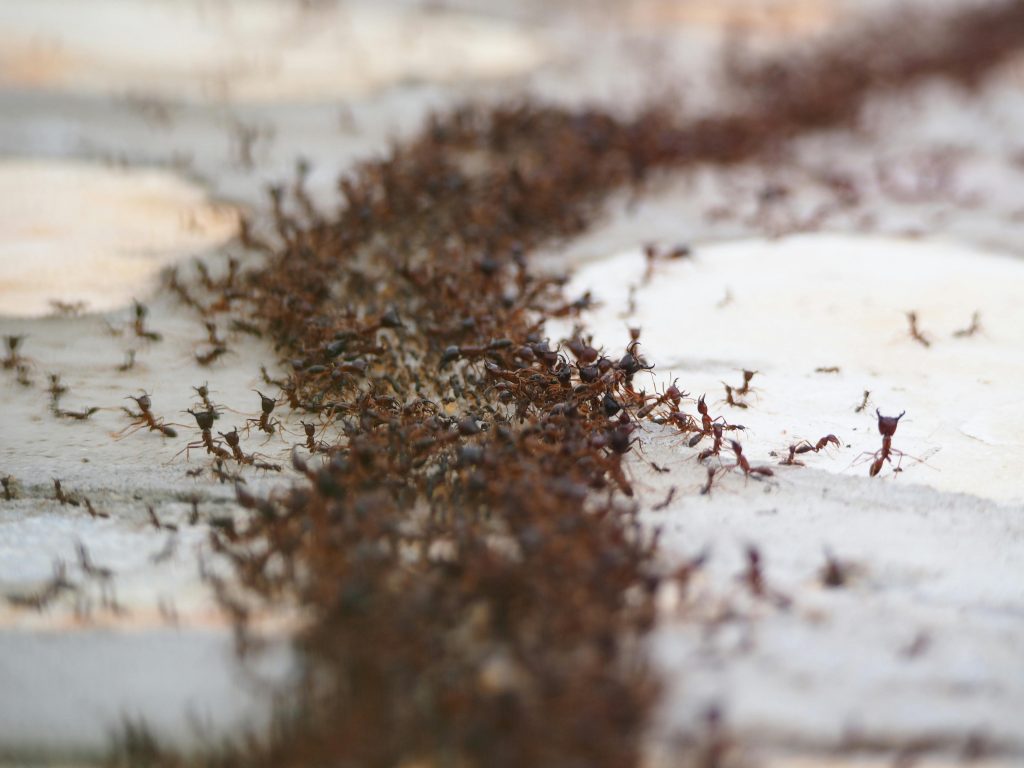
Our perspective on the current state of world affairs
There is no discussion that current times are troubled ones. Fundamental values that have underpinned our way of life for decades are now under threat. To some, this seems like an evolution without actual consequences on their lives, to others an inevitability or even a positive step towards something else more in line with their beliefs. At Dorylid Systems, we do not share these views. We believe that each individual carries their part of responsibility for the state of the world, that inaction is a choice, and that this choice is at present unacceptable. In Sun Tzu’s words: “The opportunity to secure ourselves against defeat lies in our own hands, but the opportunity of defeating the enemy is provided by the enemy himself.” Europe must now choose whether it wants to secure itself, or to offer its many enemies the means of its own defeat. Dorylid Systems is both our answer and our choice, the manifestation of our belief that our civilization deserves defending against the many threats it currently faces.
Unfortunately, at a time where the conflict in Ukraine is demonstrating on a daily basis that cheap low-tech attritionable systems have become a game-changer in the way conflicts are being fought, we can only observe that European forces field an inadequate high-low mix of weapon systems, and that Europe keeps falling behind across the board in production capabilities and practical engineering know-how compared to major world powers (Russia, USA, China). In particular, we consider the exclusive focus of European industrial stakeholders on high-added value (read: profitable because expensive) high-tech systems to be a mistake from a defence perspective.
Envisioned as a resolutely European company, Dorylid Systems is our contribution towards correcting those limitations. Our vision is to become the de facto standard for AI-enabled swarm applications to be designed, trained and deployed ad hoc in the field, as well as for all the ancillary tools required for this purpose. In particular, we see an opportunity to leverage the untapped power of compound AI in a manner that has so far being ignored, i.e., by developing complete pipelines that start with in silico training of AI components and end with their actual deployment. We are certain that the agile development of swarms of small, cheap, robust autonomous or semi-autonomous agents will naturally establish itself as a most important technological tool for ensuring that Europe retains sufficient military capabilities in the 21st century. And we hope that, by doing what needs to be done now, we can pave the way for more peaceful applications of our technology when the storm clears, hopefully in a near future.
A new vision for asset-centered swarms on the battlefield
In the current context in Ukraine, our first and most pressing mission is to enable the deployment of swarms of cheap, attritionable and semi-autonomous drones as a direct close-support system to frontline operators. Note that, in this context, the word “drone” covers a non-prescribed, heterogeneous mix of hardware platforms (UAVs, UGVs) with complementary capabilities and functions. We aim to create swarm applications that operate as physically close as possible to the end user or asset, in organic synergy therewith. We believe that, through the embedding of AI components, this approach will yield a wide range of new practical tools for the warfighter, from e.g., offensive support systems to defensive counter-drone solutions. As such, we are defining Dorylid Systems as a “software-defined solutions” company, which exploits existing hardware platforms within swarms powered by our software. customized for a particular client or a specific application.
In that sense, our approach is complementary to the type of battlefield-level ISR and C2 integration promoted by the others companies vying for supremacy on the field of AI-powered military assets. While these promote, inter alia, the creation of a high-level digital twin of a theater of operations, our aim is different in scope. We focus our efforts at a different level of granularity, closer to the ground. Critically, we aim first and foremost to increase the operational capacity (e.g., situational awareness, strike capability, active-defense capacity) of individual assets deployed on the battlefield. To achieve this, we want to provide them with a direct interface to drone swarms, by placing them at the centre of a local ad hoc communication network, which circumvents the threat represented by disruption or denial of long-range connectivity.
Most of all, we want swarm applications based on our technology to operate in close proximity (a few hundred meters at most) of the assets they are to be paired with or deployed for. Taking a holistic view of the development lifecycle of this type of swarm applications, we understand the difficulty to deliver such systems. As such, we recognize that, as an emerging company, we will not be able to provide the kind of vertical integration that is required. We understand that we need strategic partnerships with both technology providers and end users, and believe we know exactly how to turn this into a business opportunity. From the end users, in particular, we believe that direct and continuous involvement in our work is needed for specification of functional requirements and validation of usability. Nowadays, war changes so fast that adapting to a continuously evolving adversary is paramount. We believe – we know – that we can help with that.
Why the name?
Ants as a relevant source of inspiration

Dorylinae: “The subfamily is a monophyletic group of predatory ants, occurring throughout most of the tropical and subtropical regions of the world, with an appreciable number of species in warm temperate environments. The relatively few dorylines for which foraging biology is known usually prey on other ants or social insects, although notable exceptions occur and several of the charismatic ‘army ants’ evolved more generalized predatory habits.” – Marek Borowiec
Dorylid ants, also called driver ants or army ants, are some of the most formidable insects in the world and can constitute a threat even to humans when foraging for food. Organized in highly structured colonies that can comprise up to several million individuals, they exhibit caste polymorphism (i.e., physical specialisation of individuals depending on their role in the colony) and communicate through pheromones (i.e., they won’t write poetry, but still can pass along messages to coordinate foraging, defensive manoeuvres, load carrying, etc.).
When looked at through the prism of engineering, Dorylid ants are thus a successful and well-documented example of a large-scale system of agents that is:
- comprised of a large number of individuals capable of self-organizing into smaller functional units in a task-dependent manner;
- capable of mounting efficient defensive and offensive actions against a wide range of threats, while also carrying out all the operations necessary to the survival of the colony;
- exhibiting a complex organizational structure that is both adaptive and emergent, this structure being mediated by minimalistic specialisation and communication capabilities.
As such, they represent an incredibly relevant blueprint for swarm systems of cheap, semi-autonomous attritionable agents – be they comprised of any mix of drones, manned and unmanned vehicles, or networked sensors. He who can efficiently implement this blueprint will gain a decisive edge on the battlefield.